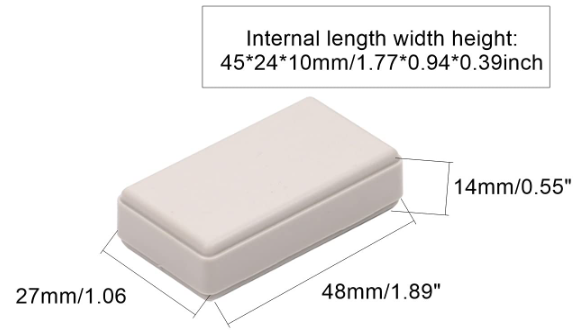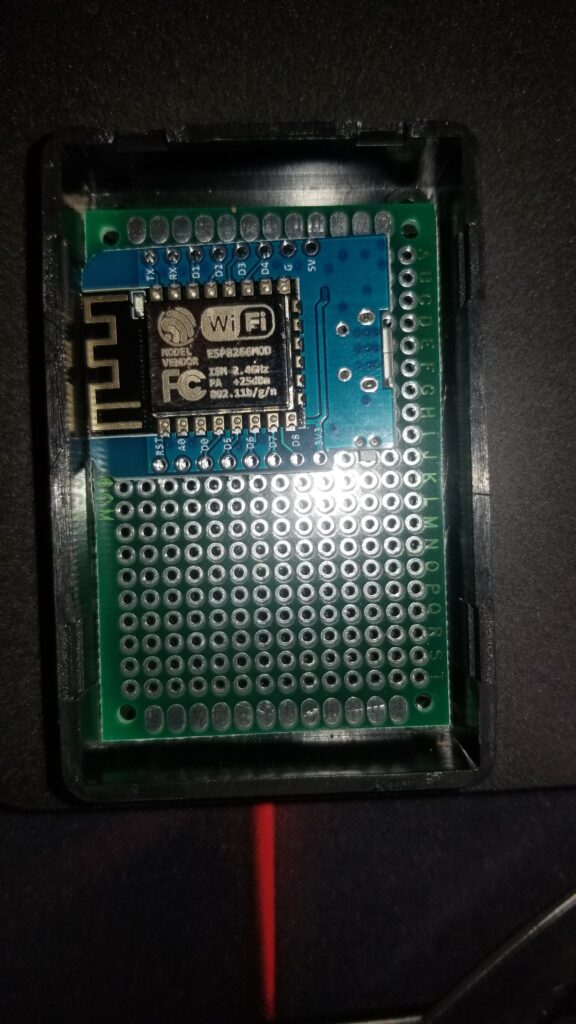The ESP8266 boards have eight GPIO pins, though some of them are kinda hijacked early on, they should be available for more general use after the board boots up.
Leaving the bare board hanging by wires is just begging for trouble, so I want to put them in some kind of enclosure. The first ones I ordered turned out to be just a tiny bit too narrow.
Chalk that up to poor tracking of dimensions while shopping. I will keep the little boxes because they may be usable for something else at some point. That and at roughly $0.87 each, even a dozen of them are too cheap to be worth the trouble of return shipping. I think it’s planned that way.
I was more careful with the next case. I first found a small prototype circuit board of 40 x 60 mm, big enough to put the ESP32 board on with some margin around it, then found a case with internal dimensions to fit that board. If I also provide 5V power in some other form besides microUSB, I can mount the ESP8266 in the most space efficient manner on the board and inside the case. This will leave the maxium room for additional components or connections.
I think I will first rebuild the water meter device, adding an on-board temperature sensor and the sensor input and relay output that I had originally intended to put on the big water filter to let us manually trigger a filter cleaning cycle remotely. What would really be cool is if I can find 5V or even 3.3V available inside the filter and eliminate one more wall wart power supply.
While I was ordering stuff, I got too many Dallas DS18B20 in the raw TO92 package suitable for putting directly on a PC board and too many additional ESP8266 boards to connect them to. I also got a variety of little terminal blocks to make it easier to build boards for external connections and make those connections later.
Finally, I got some breakout board things which should help with prototyping all kinds of things with the ESP8266 boards. They breakout all the pins on easily accessible terminal blocks.
Hopefully, all these tools and supplies will soon lead to a bunch more ESP based peripherals to my Home Assistant instance.

